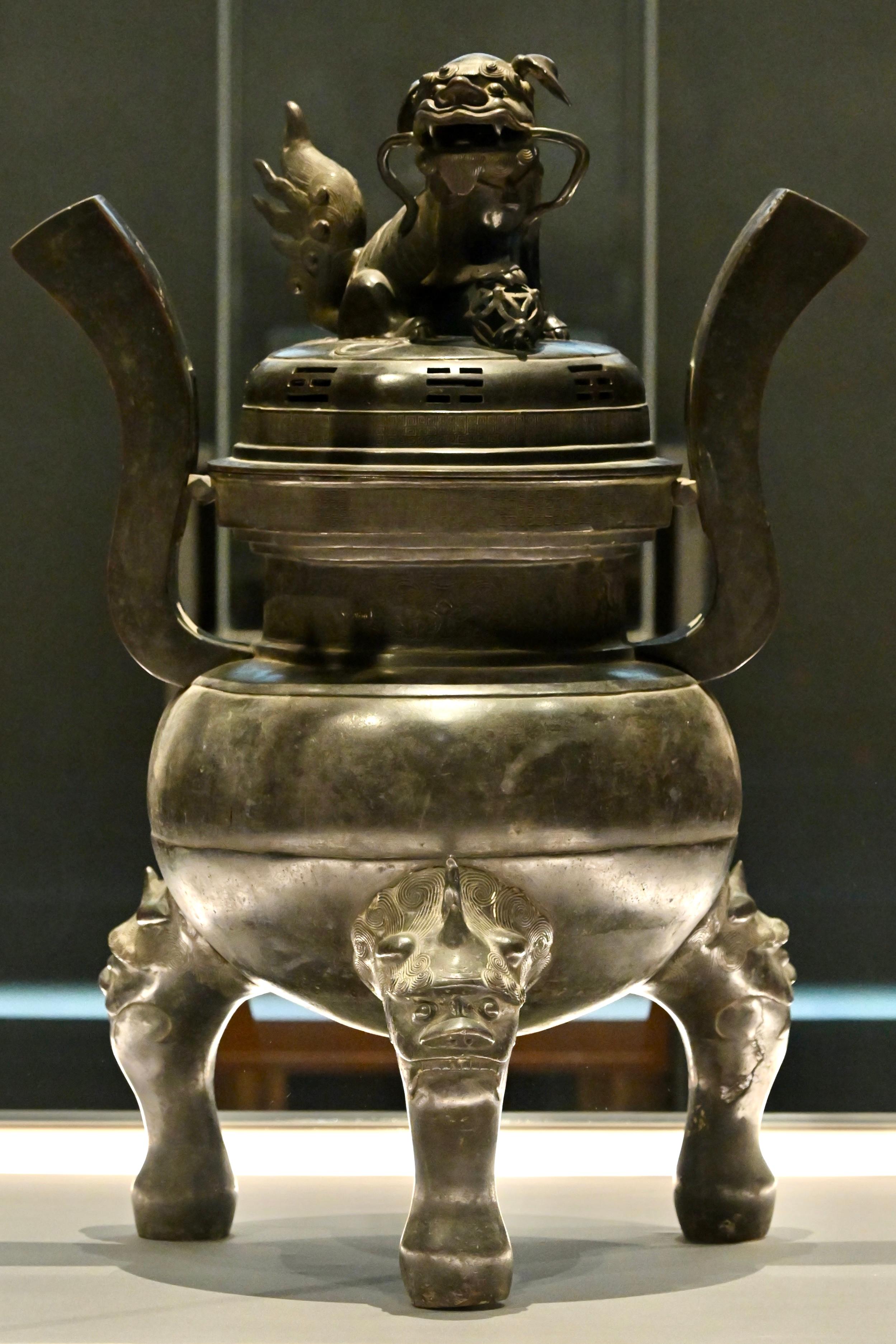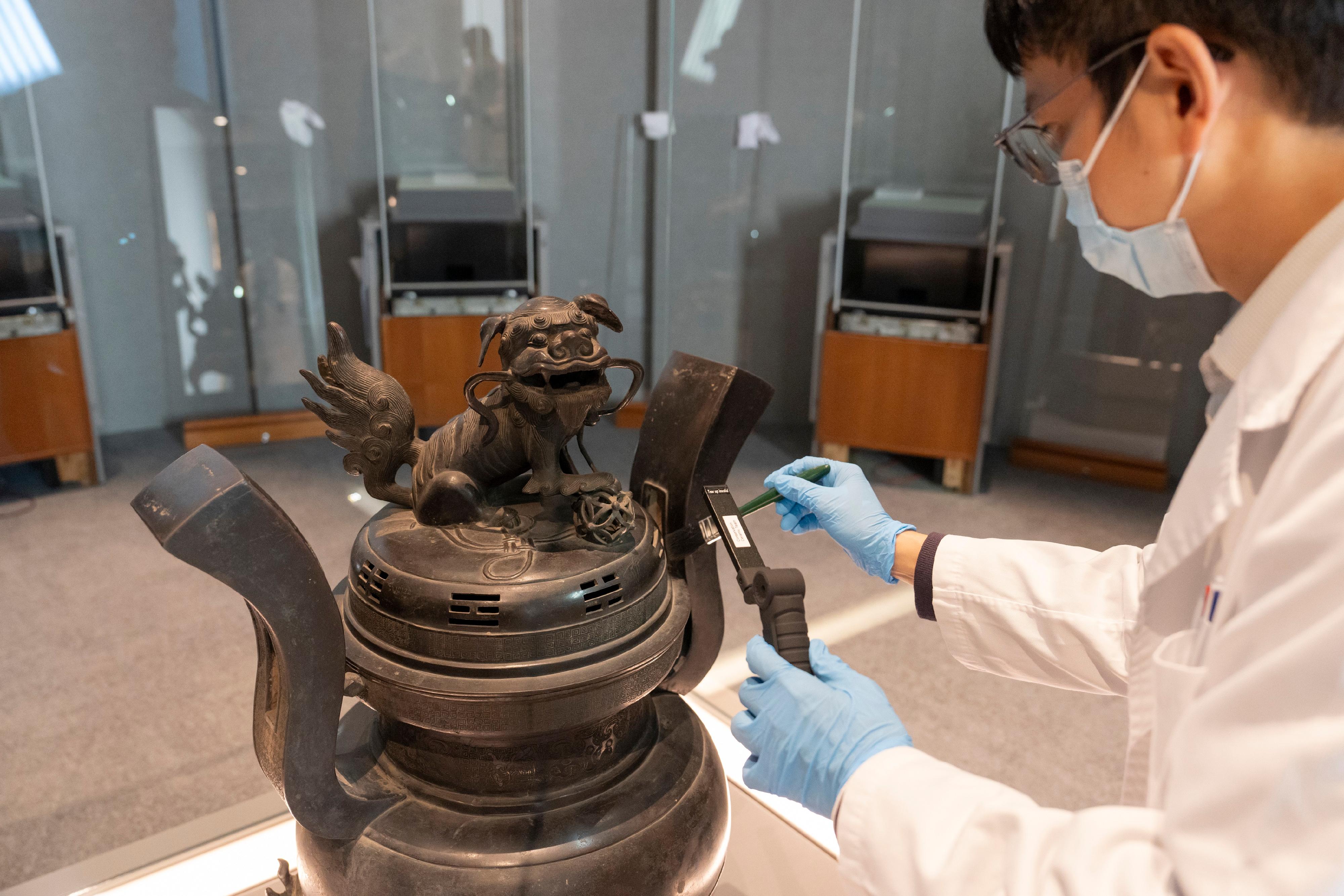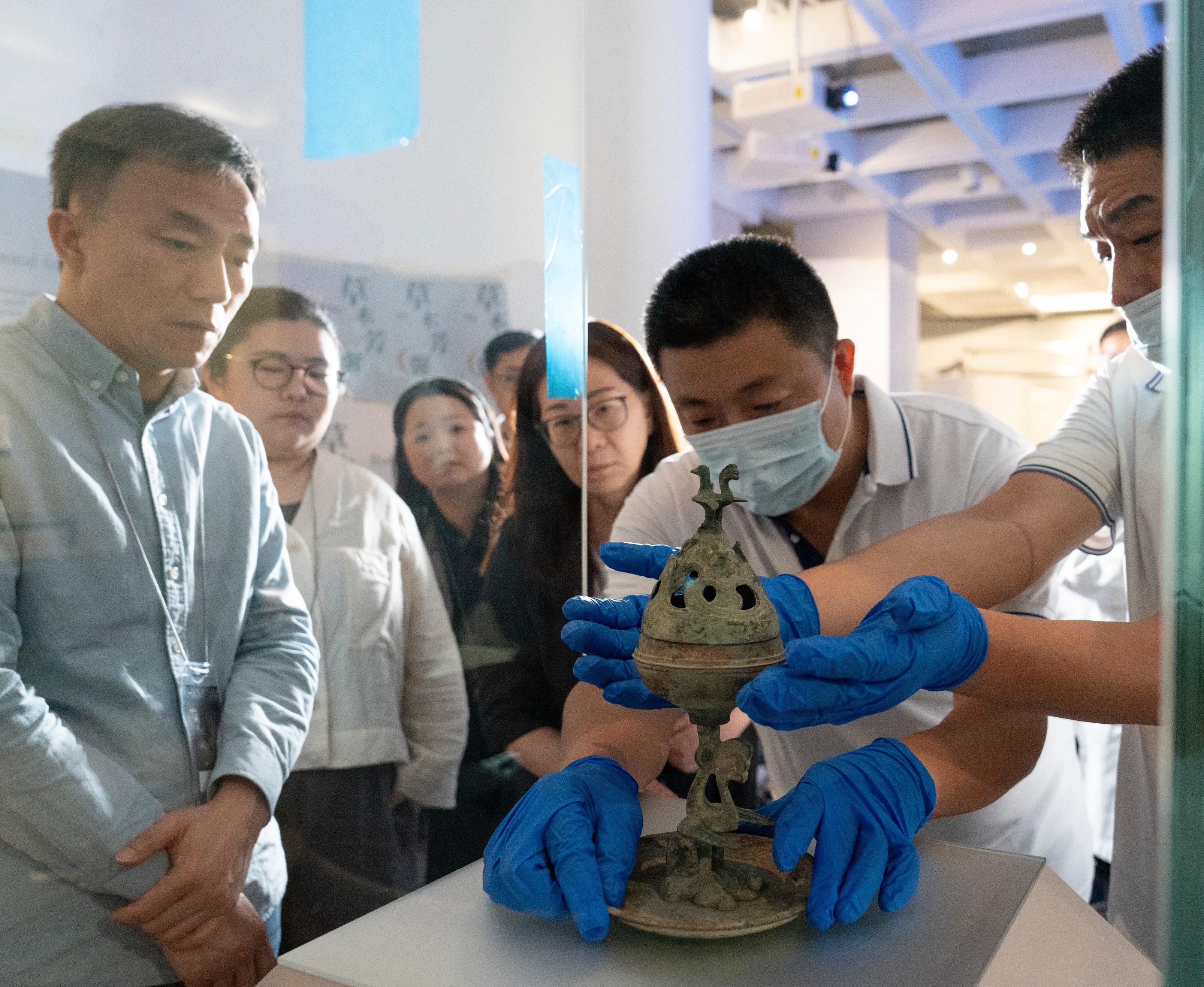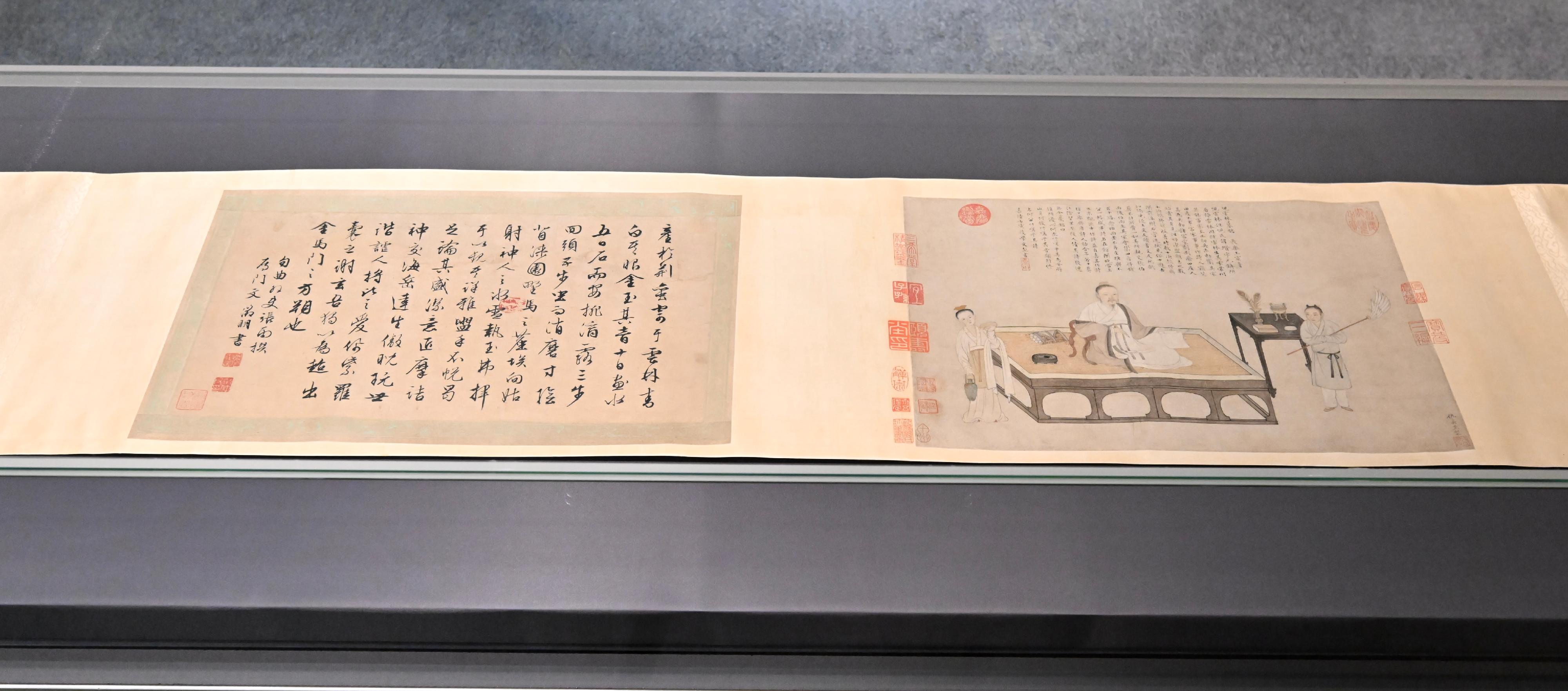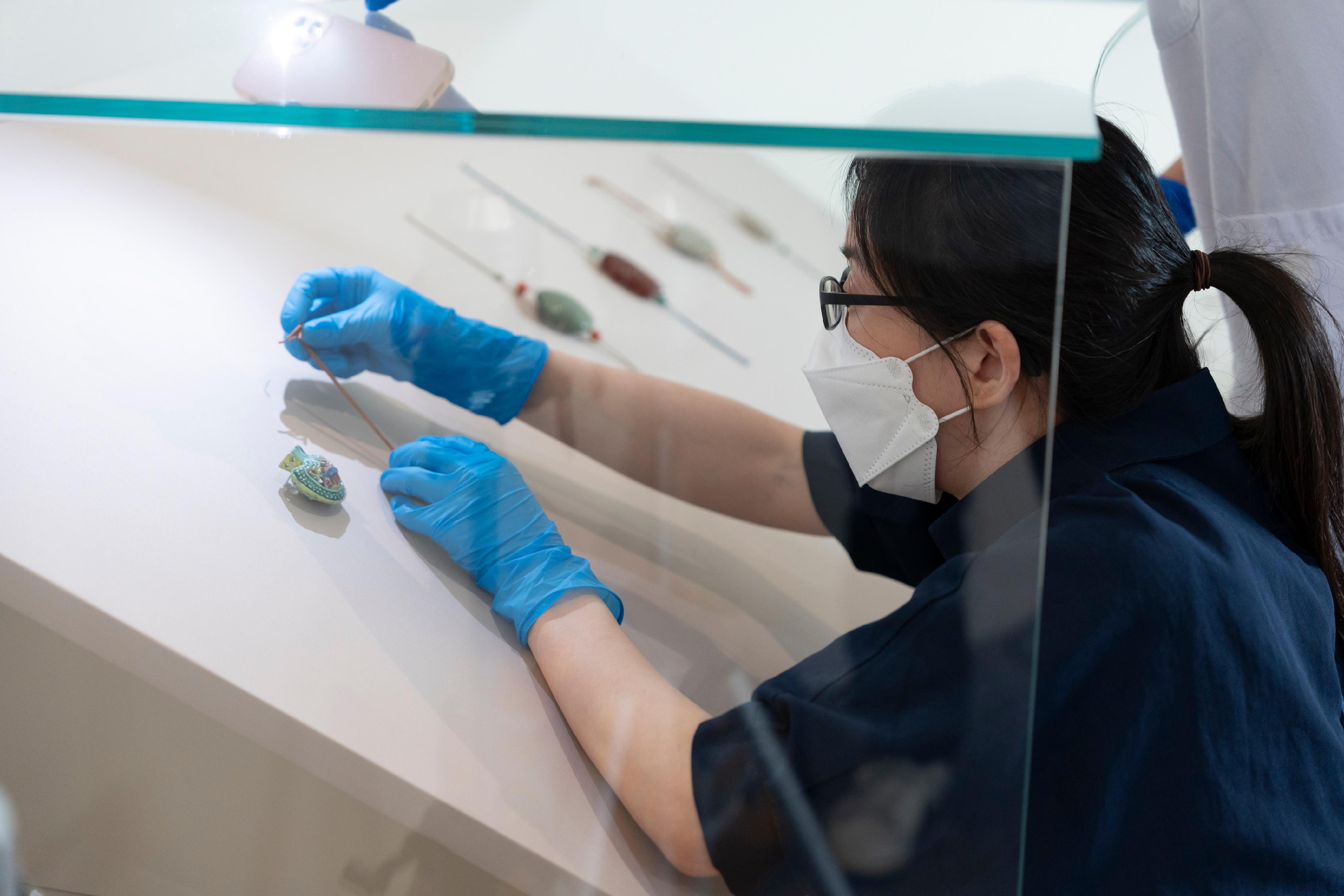HKMoA works intensively preparing for “Fragrance of Time – In Search of Chinese Art of Scent” exhibition (with photos)
The Hong Kong Museum of Art (HKMoA) will stage the "The Hong Kong Jockey Club Series: Fragrance of Time – In Search of Chinese Art of Scent" exhibition starting from June 28, featuring 109 sets of exhibits from the Shanghai Museum collection, and 51 sets from the collection of the HKMoA that include ceramics, bamboo carvings, paintings and bronze objects spanning across the Neolithic period to the 20th century. The exhibition will take the audiences on an olfactory journey across thousands of years. The exhibits, all classified as national graded treasures, from the Shanghai Museum have arrived in Hong Kong earlier. Experts from the Shanghai Museum and the curatorial team of the HKMoA are working intensively for the exhibition.
 
Chinese culture of scent has a long and rich history. The use and appreciation of fragrances are closely intertwined with the aesthetics of ancient life and artistic creations. The exhibition will be divided into four sections, exploring different angles from fragrance materials to religious rituals and literati lives. The HKMoA will set up corresponding aromatic installations in different exhibition areas, allowing visitors to experience the sensory delights of scent appreciation in ancient China.
 
Among the 160 sets of exhibits, one of the highlight exhibits is a nearly 100-kilogram censer with a lion-form knob from the Ming dynasty. This national treasure is the heaviest exhibit in this exhibition and is being loaned out for exhibition for the first time. Due to its large size, the staff specially produced a movable base to facilitate its installation in the display cabinet and to reduce the risk of damage during transportation. This censer is designed in a round tripod form with a lid adorned with a squatting lion stepping on a rolling ball. It can be deduced from the lion design that the censer was used in royal temples during the Ming dynasty. The curatorial team has installed lightboxes underneath the four sides of the display case to enhance the three-dimensional effect of the exhibit. Due to the strict requirements on humidity and temperature control for bronze artefacts, the conservators have placed moisture-proof materials inside the display case to maintain the relative humidity below 50 per cent.
Another highlight exhibit is the most typical example of a Han dynasty hill censer with a phoenix and turtle stand. The censer's lid is shaped like a celestial mountain, with a mythical bird standing on top. The stem of the censer is a phoenix with stretched wings, with its head held up high and mouth holding the base of the censer, while standing on a divine tortoise on a supporting tray. During the Han dynasty, people believed that to receive guidance from an immortal, they must create a setting resembling the celestial realm. A censer designed as a landing place for immortals in the form of a sacred mountain is a vivid reflection of people's pursuit of immortality during the Han dynasty.
"Portrait of Ni Zan" by the renowned Ming painter Qiu Ying is also one of the featured exhibits, a Grade-2 national treasure of Chinese painting that is seldom loaned out. Qiu Ying, one of the "Four Masters of the Ming dynasty", was skilled at portrait painting. This scroll demonstrates his delicate brushwork and colouring techniques, depicting a scene of a literati study where incense tools are on display. Due to the fact that the calligraphy on the colophon section was written by another Ming Master, Wen Zhengming, the curators from both museums have specially selected these two parts for display, showcasing the literati exchanging amid swirls of fragrances during the Ming dynasty.
Another focus of the exhibition that audiences should not miss is the display of the nearly 30 sachets during the Qing dynasty from the HKMoA's collection. The curatorial team has selected sachets made of diverse materials, including silk embroidery, cloisonné enamel and jade. These tiny sachets demonstrate intricate craftsmanship such as carving in openwork and filigree work, showcasing a diverse range of designs and forms that artfully blend practicality and aesthetics. The museum has specially designed a curved and slanted display board and used stainless steel pins to display sachets in a hanging position, enabling the audience to view these exquisite exhibits from the best perspective and appreciate the remarkable handiwork of ancient portable fragrant accessories.
The exhibition is jointly presented by the Leisure and Cultural Services Department (LCSD) and the Shanghai Museum, jointly organised by the HKMoA and the Shanghai Museum, and solely sponsored by the Hong Kong Jockey Club Charities Trust. This exhibition is one of the programmes of "City in Focus: Shanghai" of the inaugural Chinese Culture Festival (CCF) and Shanghai Culture Week. Another two spectacular events showcasing the cultural charm of Shanghai styles to be presented in August are the classic play "The House of Wulong" and the full-length serial opera "Seven Heroes and Five Gallants" by the Shanghai Jingju Theatre Company as well as the "New Oriental Chinese Music Scene" by the Shanghai Chinese Orchestra.
The CCF, presented by the Culture, Sports and Tourism Bureau and organised by the LCSD's Chinese Culture Promotion Office, aims to enhance the public's appreciation of Chinese culture and cultivate citizens' national identity and cultural confidence. The inaugural CCF will be held from June to September. Through different performing arts programmes in various forms and related extension activities, including selected programmes of the Chinese Opera Festival, exemplary local arts projects recognised by the China National Arts Fund, performing arts programmes from arts and cultural organisations, film screenings, exhibitions, talks and more, the festival allows members of the public and visitors to experience the broad and profound Chinese culture with a view to promoting Chinese culture and patriotic education as well as enhancing national identity amongst the people of Hong Kong, making contributions to the steadfast and successful implementation of "one country, two systems". For details, please visit the CCF website www.ccf.gov.hk.
The LCSD has long been promoting Chinese history and culture through organising an array of programmes and activities to enable the public to learn more about the broad and profound Chinese culture. For more information, please visit www.lcsd.gov.hk/en/ccpo/index.html.
"The Hong Kong Jockey Club Series: Fragrance of Time – In Search of Chinese Art of Scent" exhibition will run until October 16. For details of the exhibition, please visit the website at hk.art.museum/en/web/ma/exhibitions-and-events/fragrance-of-time.html.
